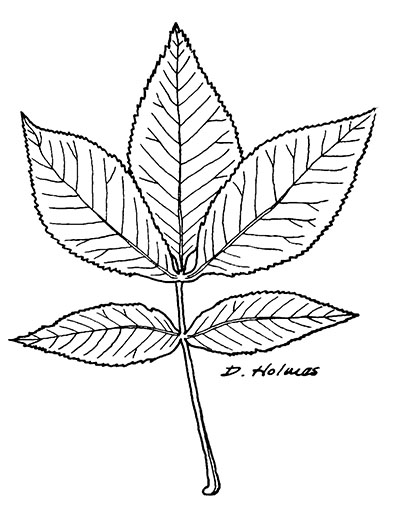Intro to Trees of Indiana: Shagbark Hickory
The classic and trusted book "Fifty Common Trees of Indiana" by T.E. Shaw was published in 1956 as a user-friendly guide to local species. Nearly 70 years later, the publication has been updated through a joint effort by the Purdue Department of Forestry and Natural Resources, Indiana 4-H, and the Indiana Department of Natural Resources, and reintroduced as "An Introduction to Trees of Indiana."
A printed copy of the full publication is available for purchase for $7 in the Purdue Extension Education Store. The field guide helps identify common Indiana woodlot trees.
Each week, the Intro to Trees of Indiana web series will offer a sneak peek at one species from the book, paired with an ID That Tree video from Purdue Extension forester Lenny Farlee to help visualize each species as it stands in the woods. Threats to species health as well as also insight into the wood provided by the species, will be provided through additional resources as well as the Hardwoods of the Central Midwest exhibit of the Purdue Arboretum, if available.
This week, we introduce the Shagbark hickory or Carya ovata.
This species is easily identifiable by its rough, shaggy bark, which is often peeling off from the trunk in thin strips. Its unique leaves feature five leaflets, two held opposite one another toward the base of the stem and three held at the end of the leaf. The fruit is a large, four-ribbed nut with a husk that will split all the way open. In the fall, shagbark hickory can provide fall color in the form of its stunning golden or yellow leaves.
Shagbark hickory has several close relatives. Shagbark can be differentiated from its cousin shellbark hickory, which features large stout twigs, seven to nine leaflets and typically has substantially larger nuts.
Shagbark hickories grow to a mature height of 60 to 80 feet tall. They grow mostly in moist, well-drained soil and are often found in upland woodlands and savannas, ranging across the Eastern United States, except in the gulf and Atlantic coastal plains, as well as in portions of Canada along Lake Erie and Ontario and the St. Lawrence River.
Shagbark hickory has a unique application in the furniture industry known as “Old Hickory Furniture,” which originated around 1900 in Indiana. This rustic furniture is made from hickory rounds or sapling with the bark left on, and was used in parks and other natural areas during his prime production.
 According to the Hardwood and Lumber Veneer series, hickories are broken up into two groups based on the number of leaflets on each leaf. The first group, the true hickories, include shagbark, shellbark, mockernut and pignut varieties. The second group, called the pecan group, includes true pecan and bitternut hickory.
According to the Hardwood and Lumber Veneer series, hickories are broken up into two groups based on the number of leaflets on each leaf. The first group, the true hickories, include shagbark, shellbark, mockernut and pignut varieties. The second group, called the pecan group, includes true pecan and bitternut hickory.
Hickory is used in the kitchen cabinet industry as well as to make flooring and furniture. Products made from hickory are often marketed as pecan, regardless of the species used. Because of its hardness, strength, toughness and resiliency, hickory can be used to make tool handles, such as sledge hammers, axes, picks and hammers, due to its ability to withstand the impact that occurs with these tools. Hickory is also used to make ladder rungs, wheel spokes, drumsticks, skies, golf club shafts and gymnastics bars. It is also prized for smoking meats, making skewers and for use as a fuel wood due to its high density.
Pecan hickories have a density of 46 pounds per square foot, while true hickories range from 50 to 78 pounds per square foot. Hickory is rated is one of the better woods for bending and is an excellent wood for boring. According to the Wood Database, hickory is among the hardest and strongest of woods native to the United States.
Shagbark Hickory in Hardwoods of the Midwest, Purdue Arboretum Explorer
Hickory and Pecan Species in the Hardwood Lumber and Veneer Series, The Education Store, Purdue Extension's resource center
Sustaining Our Oak-Hickory Forests - Hardwood Ecosystem Experiment, The Education Store
The Hardwood Ecosystem Experiment: 2006-2016, The Education Store
Indiana Forestry and Wildlife: The Hardwood Ecosystem Experiment, The Education Store
Purdue Plant Doctor
Native Trees of the Midwest, The Education Store
Shrubs and Woody Vines of Indiana and the Midwest, The Education Store
Investing in Indiana Woodlands, The Education Store
Forest Improvement Handbook, The Education Store
ID That Tree, Purdue Extension-Forestry & Natural Resources (FNR) YouTube playlist
Woodland Management Moment , Purdue Extension-FNR YouTube playlist






